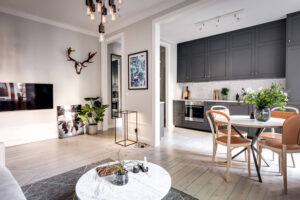How design and smart technologies are combined
Which features of smart technologies do architects and designers use to create their projects? It can be complex ideas united by a common purpose, for example creating a “green” house or it can be individual design solutions for the target areas. Today we’ll show you how technologies, architecture and interior meet in your house.
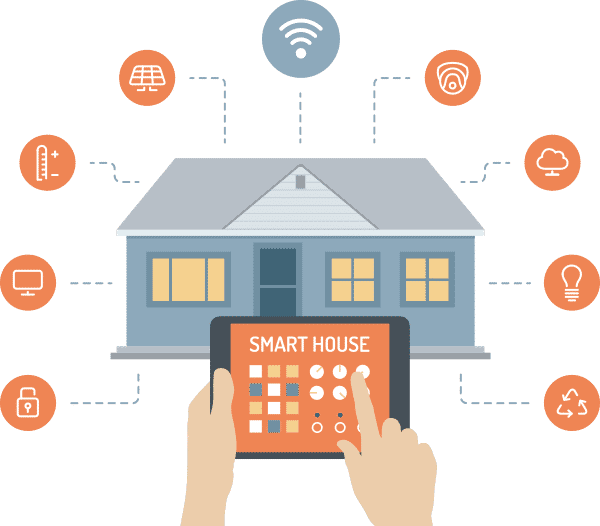
ong day of work. You open the door and the light turns on as softly as you like. It is 7:58 p.m and by the moment you took off your coat and street shoes a sports program, which you will watch in the living room, should start. The TV turns on. You delete a message stating that the TV has recorded the pre-match for you and you start to watch the show, however the signal from the kitchen stops your viewing and asks you to come in. It was your refrigerator: it signaled that your favorite drink in it is cooled to the desired temperature. You take one bottle and you want to get some food but the fridge shows you a notification that this food is probably already overdue. In the same time it picks up the phone number of food delivery and you only need to get a smartphone out of your pocket, because they are ready to listen to you on the other end of a phone. You make the order and go back to the TV, continue watching the show and then the smart home will notify you that you forgot to set the alarm, but nothing happened because it’s already done it for you. You relax and continue to watch the show while your dinner is on the way to your house.
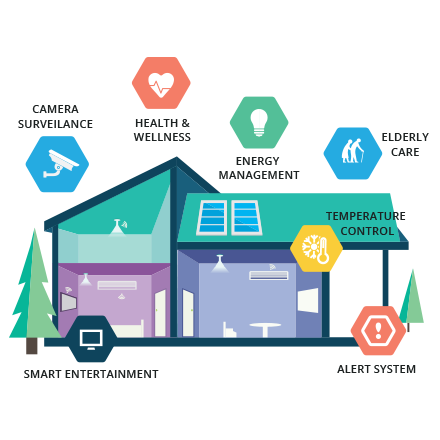
Imagine you come home after a long day at work, this scenario is a little more “fancy” than it really is in smart houses that are built around the world in our time. Today most efforts of architects and interior designers in the area of cooperation with suppliers of systems are focused around a smaller number of problems which, nevertheless, create coziness and comfort of a modern smart home.
Despite the ugly soundtrack, the video describes one day of life in a fully automated house.
Green Homes
The whole direction of green architecture is inextricably linked with technology. Here we can distinguish two main directions. The first one is the saving of energy and resources (water) due to the installation of specific settings of behavior of a smart house (heating of room), motion sensors or voice (turning lights), sensors of leaks, etc. The use of LED-backlighting is also a method of saving.
The second direction is actually the system of reproduction of resources. For electricity, first and foremost, that will be solar panels, which are used in the most warm and sunny parts of the world. For water there can be leaning systems which are similar to the ones which are embedded in this green project, along with solar panels and underfloor heating.
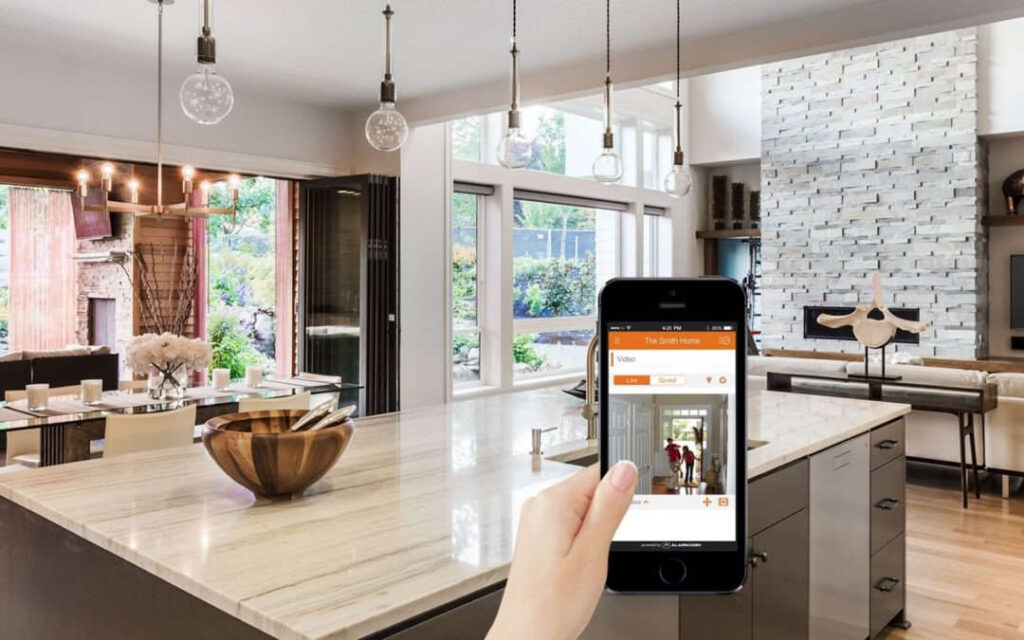
There is a special house in Miami which not only provides the energy for itself, but also sells part of it to the local public utilities. This house by the sea in San Francisco doesn’t use a system of forced air conditioning. Its layout provides the right use of the sea breeze to maintain the desired microclimate inside the house.
Almost all of the smart homes in order to save costs for air conditioning are equipped with blinds or curtains that are programmed to shelter the home from the excessive lighting of the sun and, consequently, from the undesirable heating of the room.
The creation of an atmosphere in the room
The house from this video has almost all kinds of products for smart homes, however, almost from the hall the presenter of the TV program draws attention to the lighting settings. All presets are made in accordance with a feature of a particular room. Then after the command of a smartphone or after a voice command (depends on the settings of the common system of the house) it is enough to set the right mood and the lighting will adapt to it. In such a big room it is really convenient to set the “Party” option and see how the lighting will rise immediately as well. But the decision about how it should look like is a task for the designer.

The right atmosphere sets not only the lighting but also the right sound. This project in Seoul which is made by Iridium Mobile controls lighting in different zones, allows the use of dimming (soft dim light). It manages the equipment for the sound Hi-Fi and for the home theater, which can set all necessary settings for watching movies and for listening to various styles of music, depending on the implemented scenario.
Setting the tone
Imagine that the walls of your home can also be programmed for different occasions and they will change their texture or pattern after the given command. This design process became possible because of the construction on the basis of electronic ink which was presented in the CES exhibition (international show of electronic goods) this year.
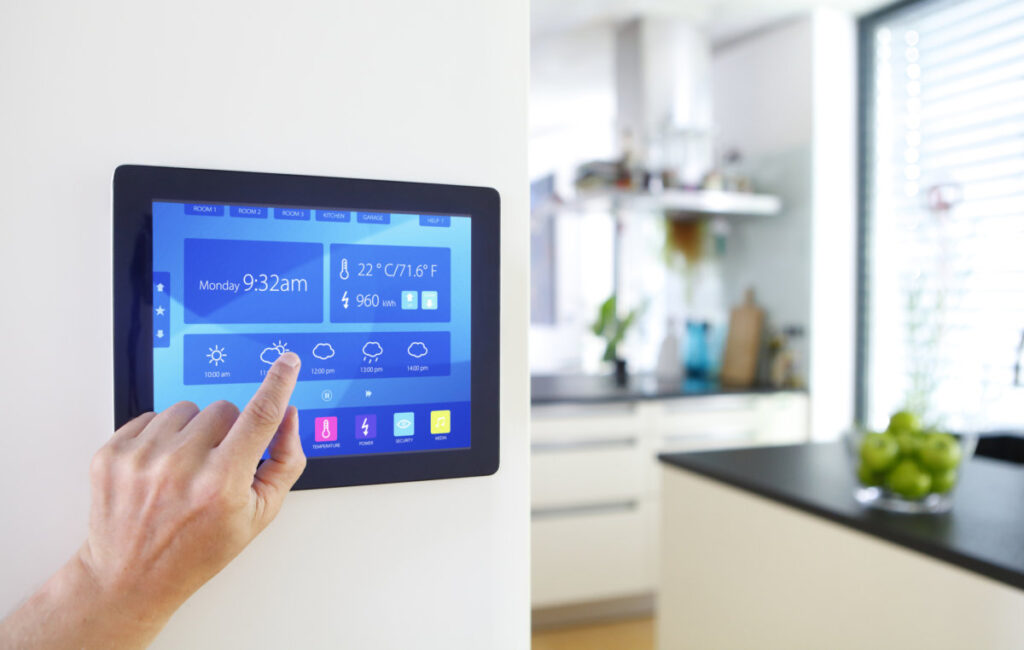
This decision must be confirmed by architect and designer primarily because you will need to choose not only the color but also the pattern and the frequency of its change and you’ll need to consider the relevance of these parameters for each situation.
The Bathroom
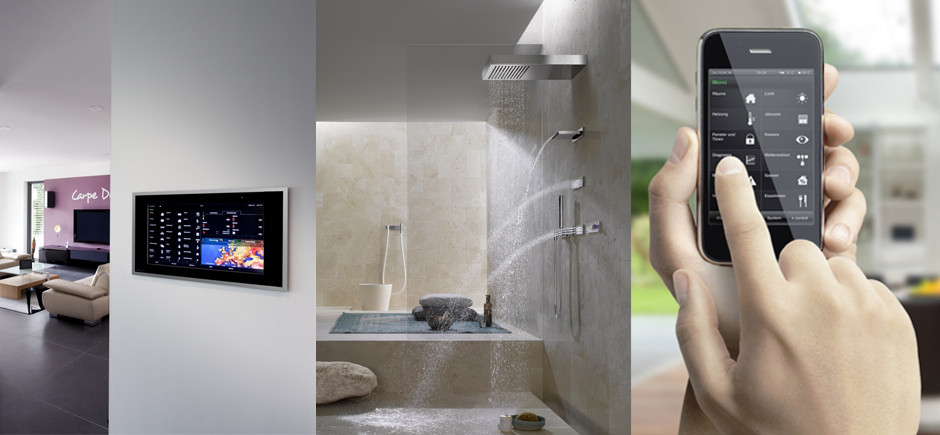
A modern bathroom can be equipped not only with screens and sound, it can be programmed on a certain song or channel in the morning. Have you ever noticed that the mirror in an expensive hotel or spa is never fogged? This defoger built into this project.
The Aesthetic Aspect
It’s a home theater with a projector in the British city of Aylesbury, the creators of it hided all the wires so they do not spoil the design.

During the developing of this kind of media community as a design project, you can take this into account and almost deprive the room of the visible presence of any switching. So smart technology combined with design gives aesthetically completed space.





